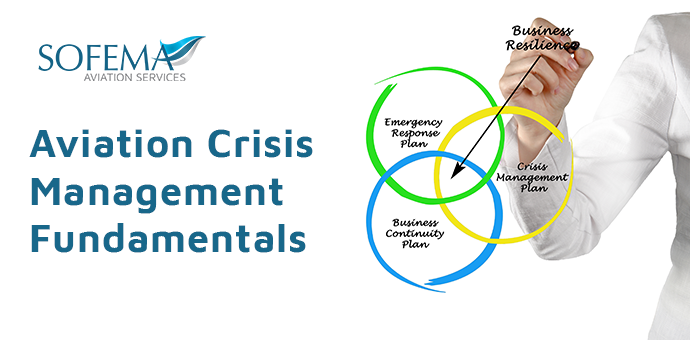Sofema Aviation Services (SAS) www.sassofia.com considers the need for organisations to engage effectively with the potential for exposure to aviation crises and to ensure effective mitigation is invoked wherever possible.
Introduction
Contingency planning is sometimes considered as an expense without a quantifiable immediate benefit by the leadership team. Unfortunately, this is not a good stand to take as multiple risks remain unquantified.
One of the first rules of Crisis Management is to ensure you have and work with all the facts.
An integrated approach to crisis management recognises that preventing a crisis before it happens – and learning after it happens – is an essential part of an effective ERP process.
The cost to Boeing in the aftermath of MAX crises (according to CNN) is over 18 billion, clearly, this is a terrible price to pay and when we consider that many of the pre-cursors to the terrible event were potentially understood but for various reasons not acted upon. (The keyword here is complacent and often organisations become complacent in relation to their potential exposures.)
So often a particular crisis is created by a particular organisational behaviour which is subsequently mismanaged which unfortunately exacerbates the negative consequences and causes significant damage to the organisation’s credibility.
Consider the following regarding – bad news!
- Bad News should be delivered as soon as possible
- Avoid dragging out the news as you will then become the centre of the story
- Always provide the fullest possible information – the more candid the better
Action Steps to be taken
- Ensure the facts (good & bad)
- Rapid dissemination (Stay ahead of the social media curve)
- Keep the message simple but true
- Respond rapidly to miss information
- Build an action plan to repair the “damage”
Taking Appropriate & Timely Action
Sometimes, identification and analysis of the facts suggest a potential way ahead. Care should however be taken to move in the correct direction at the best speed and not to exacerbate the crises.
The focus should also consider the need to maintain as far as possible the “status quo” of the various business processes which need to remain fully functional and effective.
Evaluate all options using wherever possible “subject matter experts” and choose the solution that makes the most sense for the current situation. Continue to monitor and stay connected to the action plan to ensure you remain aligned with the objectives.
Post Event Analysis
Take note of the following best practice steps post-event:
- Fully determine & understand what really happened
- Avoid setting out to assign blame (It is seldom that an event was intentional)
- Use experts to add value to the process
- Take every opportunity to learn from the event
- Implement all possible changes to avoid it happening again
The post-event review will vary from company to company and depend on the size of the organisation and the nature of the event.
Possible actions include:
- Management team assessment
- Technical root-cause analysis
- Forensic analysis
- Root and branch review
- Co-operation with external review agencies
- It might even involve cooperating with an external review, such as a coroner’s inquest or an official investigation
Final Words
When a major event impacts another organisation learn to ask the questions:
- ‘Could this have happened to us?’
- ‘Would we have made the same mistakes?’
- ‘What can we learn from this?’
Next Steps
Sofema Aviation Services provides specific support related to ERP Training, Testing & Preparation of Process & Procedures – please see www.sassofia.com or email team@sassofia.com
Tags:
aviation, Crisis Management, ERP, Event Analysis, Forensic analysis, Management team assessment




